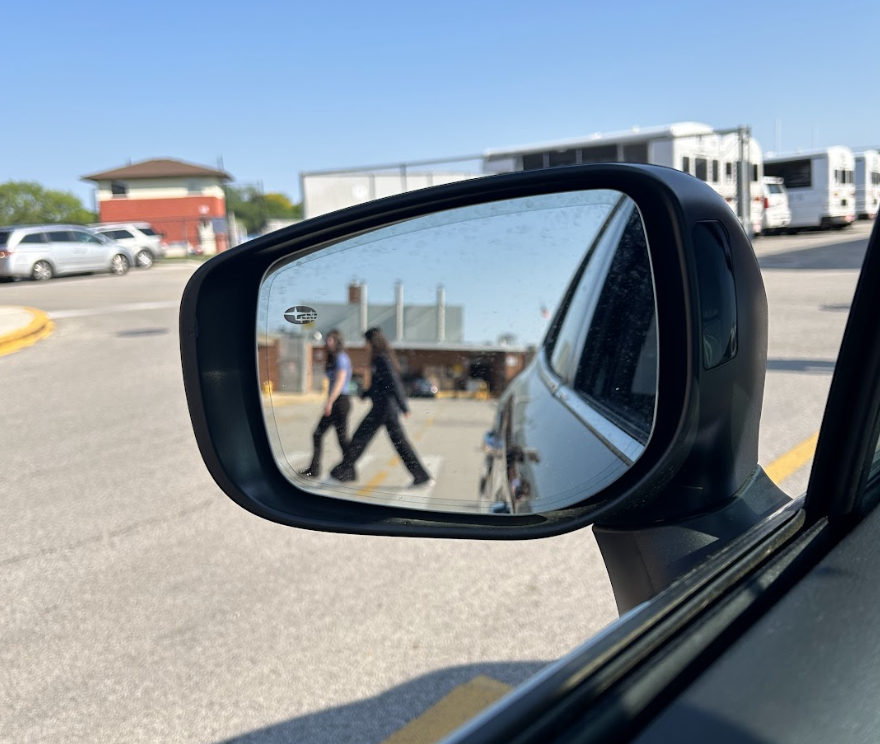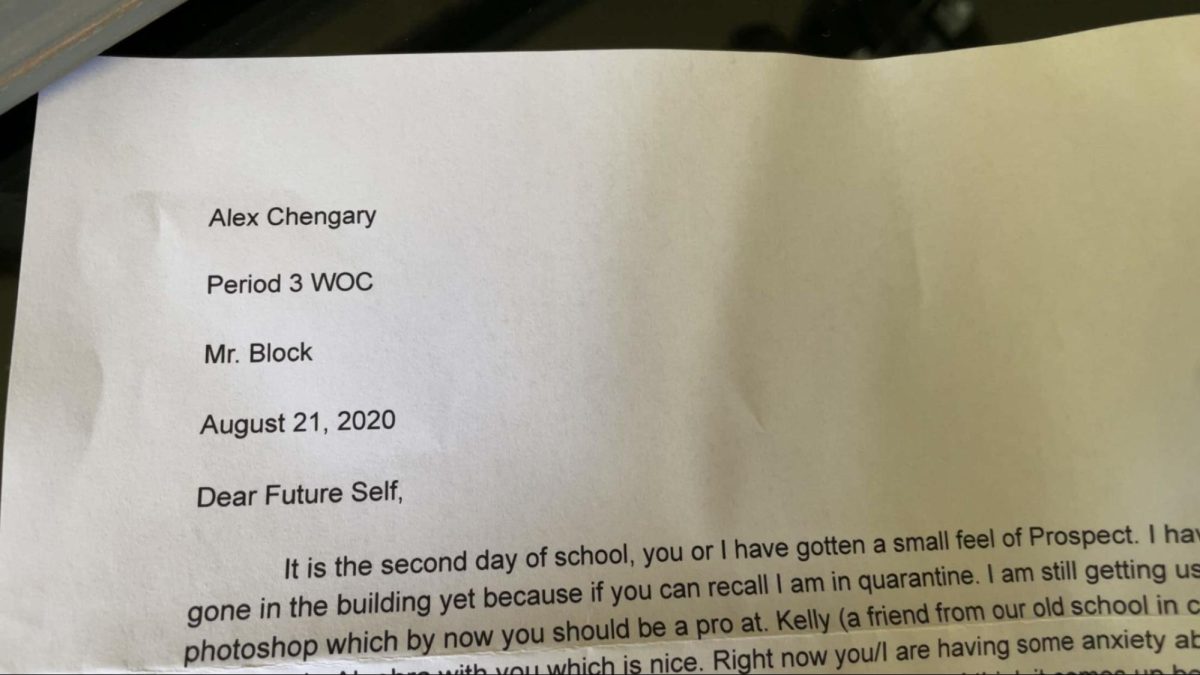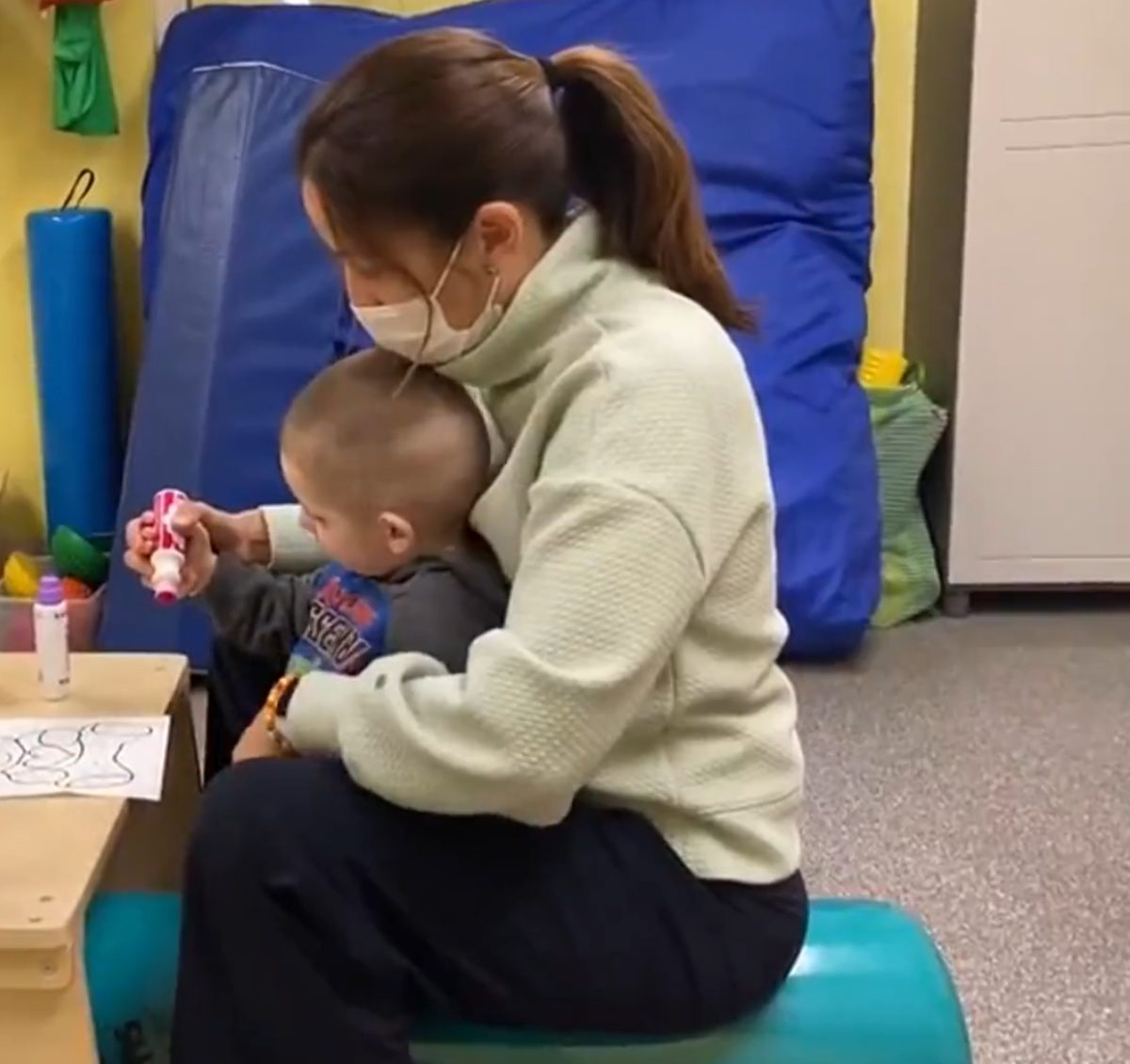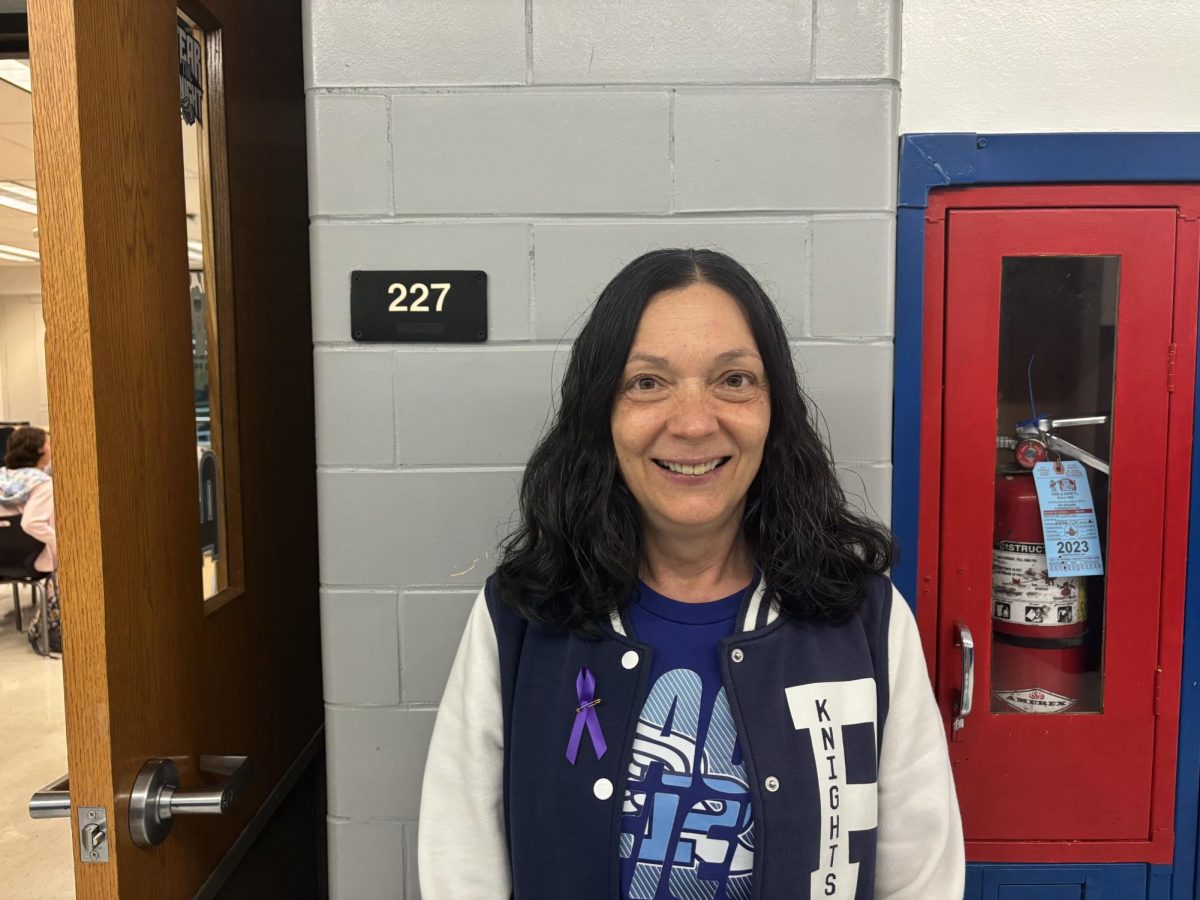Driving is practically second nature for sophomore Molly Beyna. No one would blink twice if they saw her driving around the Prospect community: getting Starbucks, picking up her freshman brother from St. Viator high school, driving friends around or helping her parents with errands.
Although Beyna is a sophomore and doesn’t have a parking pass, she is fortunate enough to have her last block of the day off to go home and come back to freely park at the school. Whether it be for cross country or softball practice, Beyna usually finds herself back in the Prospect student parking lot by the time 3 o’clock rolls around.
Beyna will pull in her car to a parking space, but she won’t immediately leave her car. Instead, she waits for the final bell to ring at 3 o’clock, which signals her to go into high alert. Beyna describes how the parking lot quickly turns into a nightmare as students begin to pour out from school and funnel into their cars.
“Everyone is trying to get out as fast as they can,” Beyna described. “And they aren’t really thinking about everyone else around them.”
Unfortunately, Beyna isn’t the only PHS student who must brave the student parking lot. Whether it be at the start, end and even middle of the day the student parking lot constantly poses a safety concern to just about anyone in it. In fact, the general area around the Prospect building tends to raise some red flags for a lot of people, students and parents alike.
From 1983 to 2021, the Federal Highway Administration found that the amount of 18 year olds with licenses dropped from 80% to 60%, while the amount of 16 year olds with licenses dropped from 46% to 25%.
With fewer teens than ever before getting their license later on, a closer examination at the relationship between teen drivers and their impact on the community may be necessary.
Beyna lives fairly close to Prospect, and observes high school drivers acting in careless ways on a daily basis. She lives right across the street from a park, where kids are frequently playing around, and has seen far too many teens come speeding down her street. She described trying to relax or sleep in her room at night and being startled awake by the noise of drivers speeding down her street.
“It does scare me because I hear the noises late at night and I’m like, ‘oh my gosh’ … and I feel like it’s very dangerous,” Beyna said.
Of course, it’s not only students who worry about these things. Parents especially struggle with the idea of their young drivers being around.
Prospect parent and teacher at Maine East High School, Rachel Samlan says that she witnesses this kind of behavior all the time around Prospect. Granted, Samlan also notes that she notices these behaviors predominantly in teenagers who are new drivers.
Several days a week, Samlan comes to pick up her daughter and friends from their track practices around 5:30pm. While she waits for them to grab their things or finish practice, Samlan says she always notices people running through the stop signs in the parking lot. In particular, she mentions that the two stop signs by the field house doors are the ones where she sees this the most.
“It’s not just kids,” Samlan said. “Adults too, parents too and that [kind of] thing makes me nervous.”
Samlan also argues that this issue is also a threat to pedestrians on foot. Samlan lives on the south end of Mt. Prospect nearby Clearwater park, where a pedestrian crossing station is in place on the intersection of Golf and Busse Road. The intent of the crossing is that by pressing the walk button, flashing lights turn on that signal cars to stop. According to the Active Transport Alliance, since 2010 Illinois drivers have been required by law to stop at these marked crossings.
Despite this, Samlan says that cars often blow through the crossing despite the (as she described) “well lit … bright yellow signs … and flashing lights,” Samlan said that a lot of cars just keep driving.
“People might be cutting seconds off of their commute, but while they are doing that they put other people at risk,” Samlan said.
The Centers for Disease Control (CDC) conducted a study in 2020 and found that approximately eight teen drivers died everyday in the U.S.
Both parents and students have a right to be nervous about taking on the road, when they can clearly witness constant examples of reckless driving on the news or with their own eyes.
This growing decrease in the number of teen drivers can largely be attributed to the growing anxiety faced by teens and parents. This has been a part of the reason behind why some parents are placing any pressure on their kids to get on the roads and acquire their license.
While Samlan acknowledges that a lot of this fear stems from family’s being worried about high collision rates, she also believes there is another reason that particularly stands out to Gen Z.
”Having a license is a huge responsibility, just the expenses of having a car … [and managing] the safety and wellbeing of not just the passengers in your car, but also the people that you might see on the street,” Samlan said.
In an article by the Washington Post, mental health counselor Joanna von Staden described that there has been a connection between teens that already have anxiety and driving. She said that these teens already have an extra load of stress to deal with, and driving might be adding onto this.
Additionally, Samlan’s point about expenses definitely holds true, and as the American Automobile Association (AAA) found that, in 2023, people were likely to pay $500 for general car expenses. The AAA has also said that between 2019 and 2023 gas prices rose by a staggering 48%.
While some drivers, like Beyna, can receive financial help from their parents, many aren’t as lucky and therefore might need to hold out on driving in order to save money.
With rideshare apps and public transportation becoming more normalized each year, Samlan points out that some people simply might not need to drive places.
“With Uber, Lyft and public transportation, if you can have the same mobility with less expense and less responsibility it doesn’t seem like a terrible idea,” Samlan said.
According to Rocket Money, getting an Uber to drive places generally comes out to be $1 per mile. If a teen only needs to travel a short distance, like 10 to 15 minutes, then to get a ride from companies like Uber can be cheaper. However, if one tries to use this as a full-time permanent replacement, Rocket Money warns that it could be slightly more expensive than driving.
Even with all of this in mind, people like Beyna and Samlan said that while they have heard stories of people holding out on their license, they personally haven’t encountered this issue.
Even people who don’t drive a lot still were once fairly excited to get their license. Sophomore Quinn Davis only drives about twice a week to get to his weekend job. Despite having access to both of his parent’s cars, Davis feels that he lives close enough to Prospect to not need the usage of a car. Besides, his parents cover the approximately $2,930 fee for gas every year (according to the AAA), so he doesn’t have to stress over the economic side of driving that others might.
Therefore more often than not he is biking, walking or getting rides from other people. Nevertheless, Davis was still ecstatic to get his license and never had any thoughts about pushing it back.
“I feel like I have more freedom now [with my license] … it’s kind of nice to just be able to go places,” Davis said.
Be that as it may, Beyna, Samlan and Davis all agree that the PHS area can pose serious concerns to both drivers and pedestrians. In particular, Beyna and Samlan agreed upon the statement that Prospect should be doing more to look out for its students and staff.
“I think that they could do a better job of just making sure that we are all safe … and reinforcing [this idea] that we are here and that we want a safe community,” Beyna said.
Beyna agreed that the school should consider having one annual assembly dedicated to reminding students about basic rules of the road and how to practice safe driving. She also brought up that Knight’s Way lessons could be used for this purpose. Especially given that recent lessons, like taking accountability, are usually tied into important life scenarios that students regularly experience.
On the flip side, Samlan says that taking time out of students’ day wouldn’t be as effective given how busy and stressed students already are. Instead she proposes a different approach of using school cameras to catch students who violate these traffic rules.
“It seems to me that [if] you run a stop sign, you lose your parking permit … all Prospect has to do … is enforce the traffic laws,” Samlan said.
Whether improvements are made to the safety of the school or not, Beyna made the point that no one should be judged for getting their license late for whatever reasons they might have. As Beyna points out, getting a license at 16 is what society expects of young teens. This expectation is what Beyna says can sometimes drive the social judgment that late drivers face.
In fact, Beyna thinks that this growing urge to wait on getting a license can actually benefit a greater cause. Beyna remarked about how she often thinks about her environmental impact and how she regrets not trying harder to bike or walk places. Beyna said she knows that she shouldn’t drive as much, but Beyna said that other options are limited to most people.
She said people either walk or bike, and pointed out that biking can be hard to do in the winter months. Beyna also adds that electric cars aren’t always an option for most students who have already committed to paying for or using their parent’s gas car.
Despite these struggles, there are benefits that come with being able to cut back on miles.
A Washington Post article found that if the 66 million people representing the Gen Z population (in America) cut back on their daily mileage by 10%, it would save 25.6 million metric tons of carbon dioxide from entering the atmosphere.
However, most teens live in a world where they want to get out and experience things with their license. Even though Beyna got her license early on, she found that there isn’t any pressure for a teen with decades of life ahead of them to get their license the very day, week, or month that they turn 16.
“Everyone talks about how driving right away when you’re 16 is so fun and everything, but you have so much time to get out and drive, learn the roads, and just have a good time,” Beyna said.






